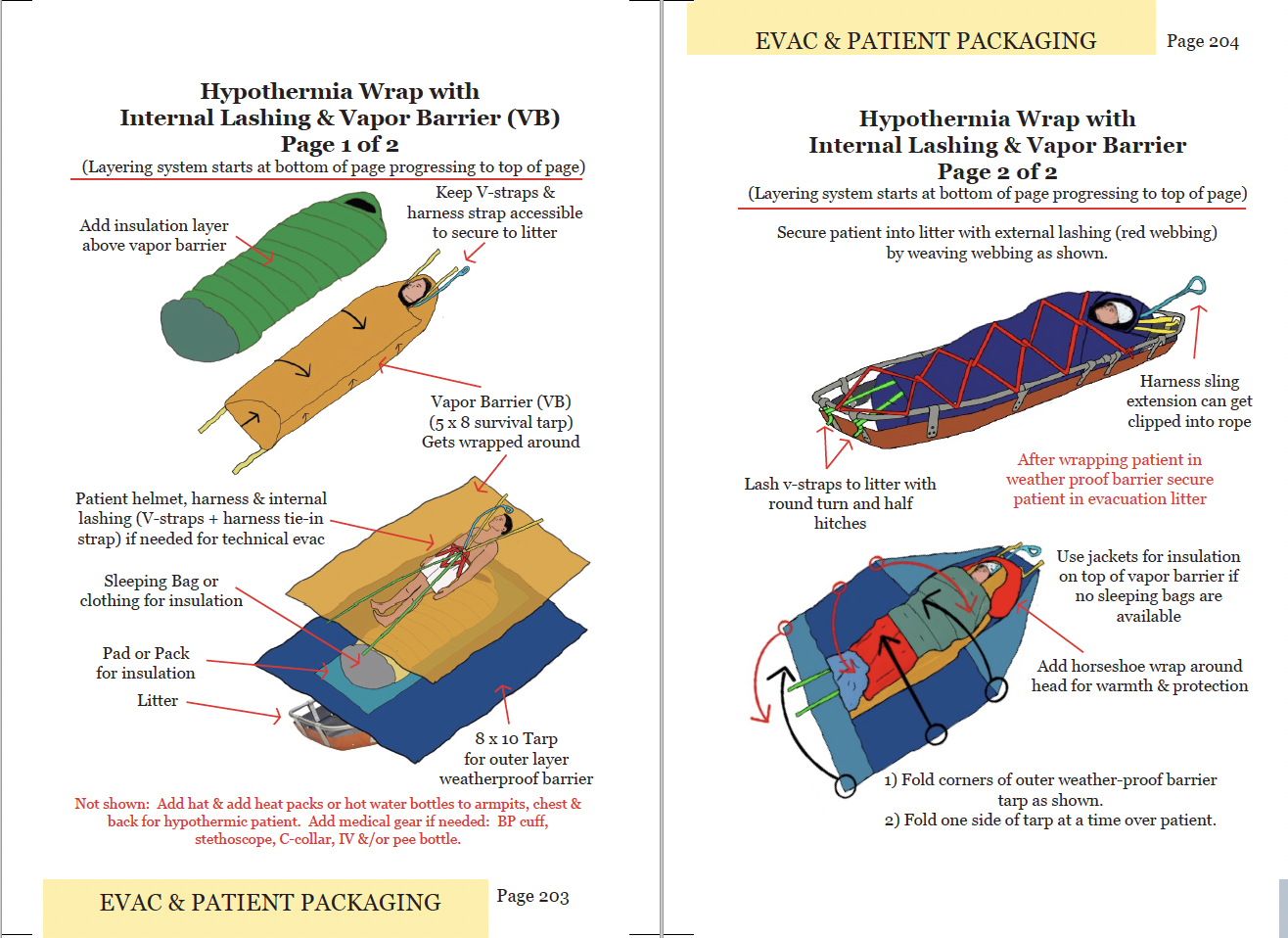
Not Just Certified—Mission Capable.
The Wild Guide Wilderness First Responder (WFR) Hybrid Course is a professional-level wilderness medicine certification program built for operational responders and wilderness professionals, including raft guides, mountain guides, ski patrollers, search and rescue technicians, wildland fire line medics, remote extraction module support (REMS) teams, rapid response teams like Colorado Rapid Avalanche Deployment (CRAD), and Reach and Treat (RAT) teams.
This hybrid-format course delivers high-impact instruction through a combination of self-paced online modules and intensive in-person field training—designed to equip you with the leadership, patient assessment tools, scene control strategies, medical skills, decision-making frameworks, and the mindset to thrive in austere, high-stakes environments.
Custom Wild Guide WFR courses go beyond the standard curriculum. We optimize your training for complex rescues with hyper-realistic simulations, field-driven tactics, and a curriculum that exceeds the minimum WMEC Wilderness First Responder recommendations.
Graduates emerge with the ability to assess, treat, and manage a wide variety of medical emergencies in remote environments, with a strong emphasis on leadership, scene safety, patient assessment, critical thinking, and evacuation strategies. Whether you're preparing for expedition leadership, managing backcountry risk, or working in a specialized tactical or rescue role, this course provides the gold standard in wilderness medical training.
Hybrid Course Format
This course is delivered in a hybrid format consisting of:
30–40 hours of interactive online instruction (videos, readings, case studies, quizzes) completed at your own pace prior to the field section
5 days of immersive in-person field training totaling a minimum of 45 hours of hands-on instruction
The online content introduces core medical concepts, essential terminology, patient assessment strategies, and treatment protocols. This flipped classroom model ensures that students arrive at the field training with a solid foundation, allowing more time to focus on real-time decision-making, critical thinking, and applied rescue medicine.
The in-person training is where theory becomes action. Over five intensive days, students apply what they've learned using hyper-realistic simulation gear, moulage, mock rescue scenarios, and guided skill stations. Emphasis is placed on mastering patient assessments, forming accurate field impressions, choosing appropriate treatment protocols, and coordinating care and evacuation strategies under pressure. You’ll train in a dynamic team-based environment to build confidence, proficiency, and medical leadership.
Prerequisites
Must be 18 years of age or older
Completion of all online modules prior to the in-person field section is required
Previous experience in wilderness settings or outdoor leadership is strongly recommended
Comfort with physically demanding activities and exposure to outdoor elements
Willingness to participate in simulated medical and rescue scenarios involving roleplay, moulage, and group problem-solving
Meets WMEC Standards
This course meets or exceeds all requirements set by the Wilderness Medicine Education Collaborative (WMEC) for Wilderness First Responder certification, including:
A minimum of 70 total instructional hours, with at least 45 hours delivered in person
Comprehensive instruction in patient assessment, trauma, environmental, and medical emergencies
Additional elective topics in the operations category focused on search and rescue techniques, prolonged field care, helicopter orientation, small group tactics, and other wilderness rescue considerations
More than 50% of our in-person course time is dedicated to hands-on, scenario-based, and skills-focused learning—ensuring that students leave with practical competence, not just theoretical knowledge.
To receive certification, students must demonstrate mastery of core topics and field skills through a written exam, hands-on skill evaluations, and participation in realistic rescue simulations.
Additional Resources
Download key documents to help you prepare for your Wild Guide WFR Hybrid Course or share important information with your team or supervisor:
WFR Hybrid Course Information Packet
A comprehensive overview for training officers, supervisors, department heads, and students. Includes course format, requirements, certifications, and policies.Student Equipment List
A practical packing checklist to help you arrive prepared for five days of immersive, all-weather scenario-based training.WFR Hybrid CEU Hour Breakdown
An itemized chart of continuing education hours organized by topic and aligned with WMEC recommendations for documentation or agency approval.

Certifications Awarded in SARMED Course
WFR
A WFR Certification valid for 3 years. Our WFR curriculum follows the practice guidelines published by the Wilderness Medical Society and the Scope of Practice documents published by the Wilderness Medicine Education Collaborative.
CPR
Students will receive a nationally recognized American Heart Association (AHA) or American Safety & Health Institute (ASHI) CPR Certification valid for 2 years.
Anaphylaxis
Students will receive a nationally recognized American Safety & Health Institute (ASHI) Use and Administration of Epinephrine Auto-Injectors Certification valid for 2 years.
Stop the Bleed
Students will receive a nationally recognized certification from The American College of Surgeons’ STOP THE BLEED® program.
Pricing
Hybrid WFR Course
$800/Student
This hybrid course consists of 30 -40 hours of self-paced hybrid work followed by a 5-day field course.
A minimum of 6 students is needed to hold the course.
The typical class size is 8-12 students.
Additional fees may apply for instructor travel & lodging.
Hybrid WFR Refresher
$375/Student
This hybrid course consists of 6 hours of self-paced hybrid work followed by a 2-day (18 hours) field course.
A minimum of 6 students is needed to hold the course.
The typical class size is 8-12 students.
Additional fees may apply for instructor travel & lodging.
WFR Courses include
E-Textbook
The course cost includes two year access to the online SARMMED WFR E-Textbook with hundreds of illustrations, pictures, and videos to help prepare you for the 5-day field session. This E-Textbook includes the latest wilderness medicine protocols from the Wilderness Medical Society, International Commission for Alpine Rescue & Prehospital Trauma Life Support.
Field Guide
A 4X6 Wilderness Rescue Medicine Field Guide that easily fits in your cargo pocket, chest harness or backpack. The field guide is 232 pages, color, & weatherproof. Additionally each student will receive two 50-page patient care notebooks to document patient care in the field.
Protocol Consulting
After participants are certified WFRs, we will work with your medical director and medical officer to establish written WFR protocols authorized by your teams medical director. Additionally, we will provide your team with an audit of current medical and rescue equipment and make recommendations to better serve your team.
“You nailed it! I feel so much more confident and capable coming out of your class. Much more so than my first full week class with a competitor. You have a great way of simplifying and helping us focus on what’s important.”
— Vail Mountain Rescuer SARMED WFR Refresher Course Evaluation

Daily Itinerary
-
Course Introduction
Wilderness Medicine Protocols
Wilderness Medical-Legal/Rescuer Professional Liability
Golden Principles of Wilderness Medicine
Patient Assessment Field Scenarios
Crew Resource Management
Communication/Documentation
Rescue Leadership Principles: Getting the Victory
Airway Assessment & Management
Oxygenation & Ventilation Basics
Wilderness Airway Improvisational Techniques
Stop the Bleed Training & Certification
Shock & Bleeding
Internal Bleeding Assessment & Treatment
External Bleeding Assessment and Treatment
Pressure bandage/tourniquet/improvised tourniquet
Wound packing and hemostatic agents
CPR & Wilderness CPR protocols
Pit crew approach/Adult CPR/Pediatric CPR/Neonatal CPR
-
Orthopedic Injuries
Fracture Assessment & Splinting
Wilderness improvisational splinting
Taping and Wrapping
Wilderness wound care
Prolonged care of wilderness wounds
Wound closure
Preventing & managing infections
Burns
Impaled Objects
Neurological Injuries
TBI and concussion management
Spinal cord injuries and selective spinal criteria
Back-boarding & Patient Packaging
Back boarding 101 & C-Collar, log-roll
Chest/Abdominal/GI Injuries
Prolonged Transport Guidelines
-
Overview of Medical Emergencies
Asthma & Anaphylaxis
Cardiac Emergencies (Angina/AMI)
Strokes
Seizure vs Syncope
Diabetes
Toxicology & Combative patients
Acute Abdomen
N/V/D and Travel Medicine
Backcountry Medicines & Technologies
-
Heat Emergencies: Heat Exhaustion/Stroke/Hyponatremia
Cold Emergencies: Hypothermia & Frostbite
Altitude Emergencies: AMS/HAPE/HACE
Avalanche Resuscitation Drownings
Lightning Injuries
Snakes, Spiders & Scorpions
-
Professional SAR Deployment
Mission Optimization for SAR Deployments
SAR Med kits/24 hour pack/IFAK Med kits
SAR evacuation equipment
Improvisational Wilderness Evacuation
Rope carries, Tarp & backpack carries
Litter and stretcher building workshop
Electives to be decided with SAR Team for the final day:
Helicopter Orientation
Stress Inoculation Training
Basic Technical Evacuations
Comments from SAR students
“It was certainly my pleasure to be in your class. Great information and I certainly learned a lot from your knowledge, experiences, and teaching style.”
— AVSAR Team member
“Thanks so much for putting on an excellent course. All week I’ve been imagining the “what if” scenarios throughout my work/play and I’ve looked back at my book a few times to be certain that my “rescue” was the appropriate action”
-anonymous SARMED particiant
“The online content is spectacular.”
— VMRG SAR Practioner
“Thanks so much for a great course, I really enjoyed learning from you..”
— SARMED course (AVSAR team member)



